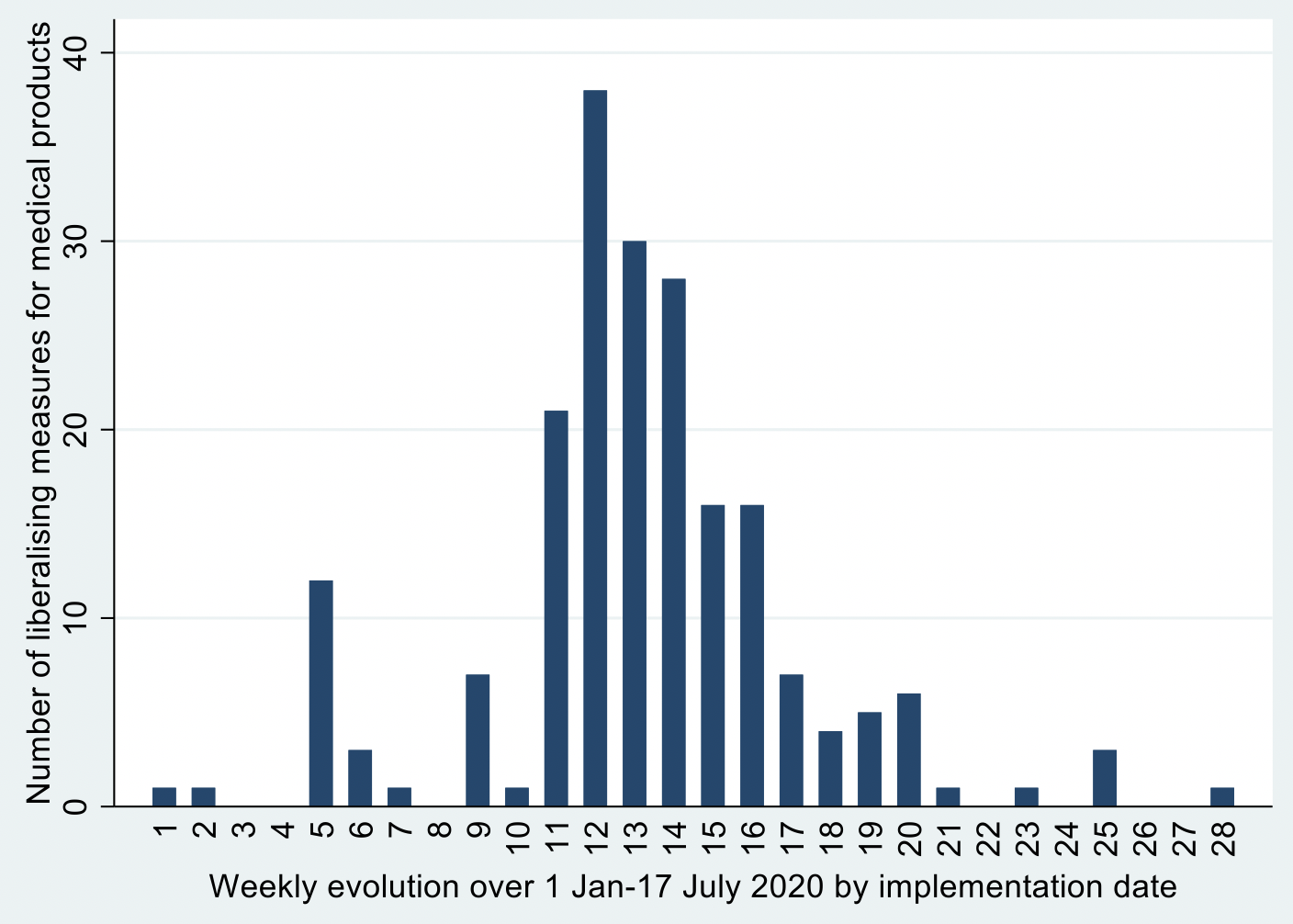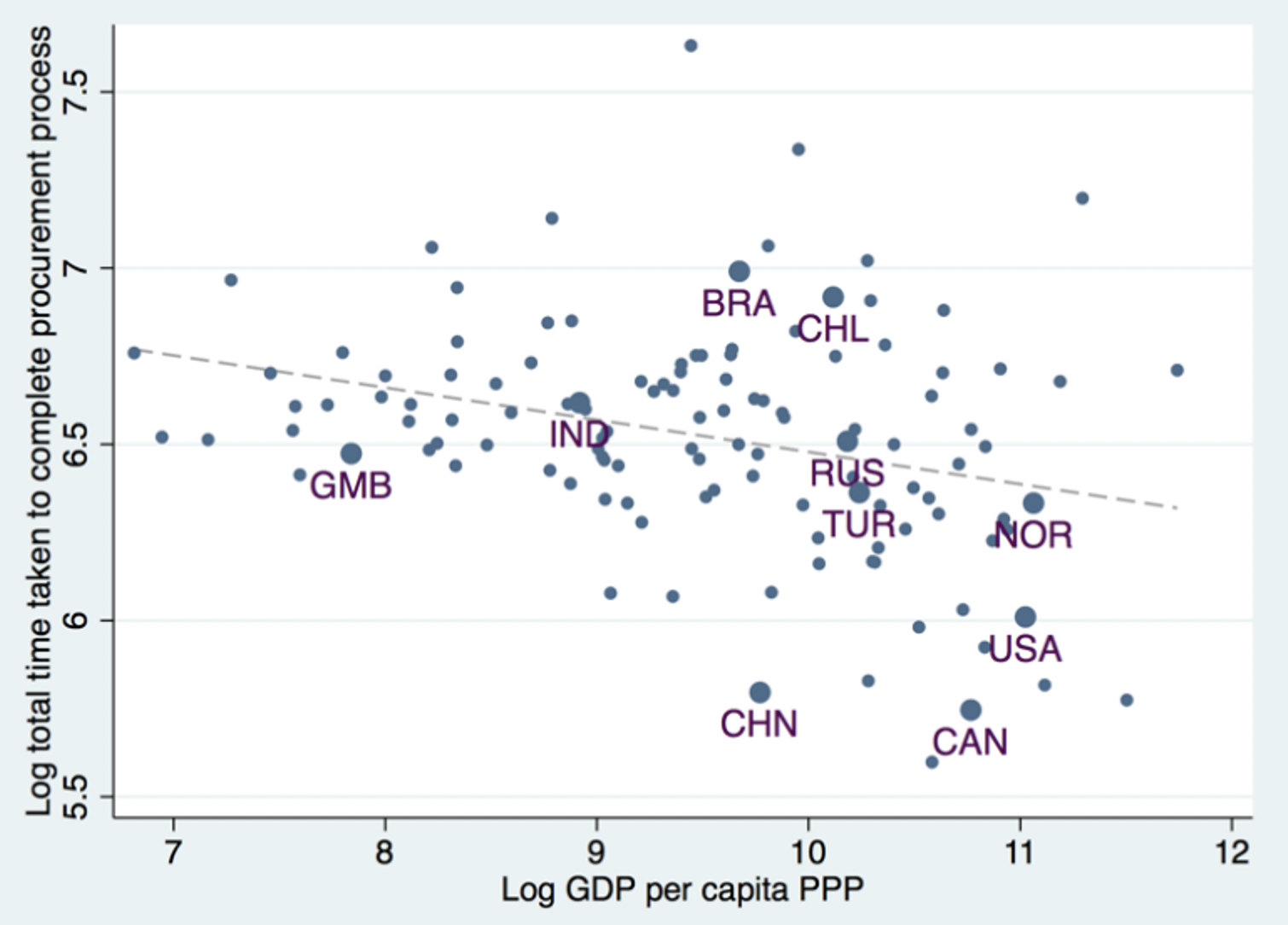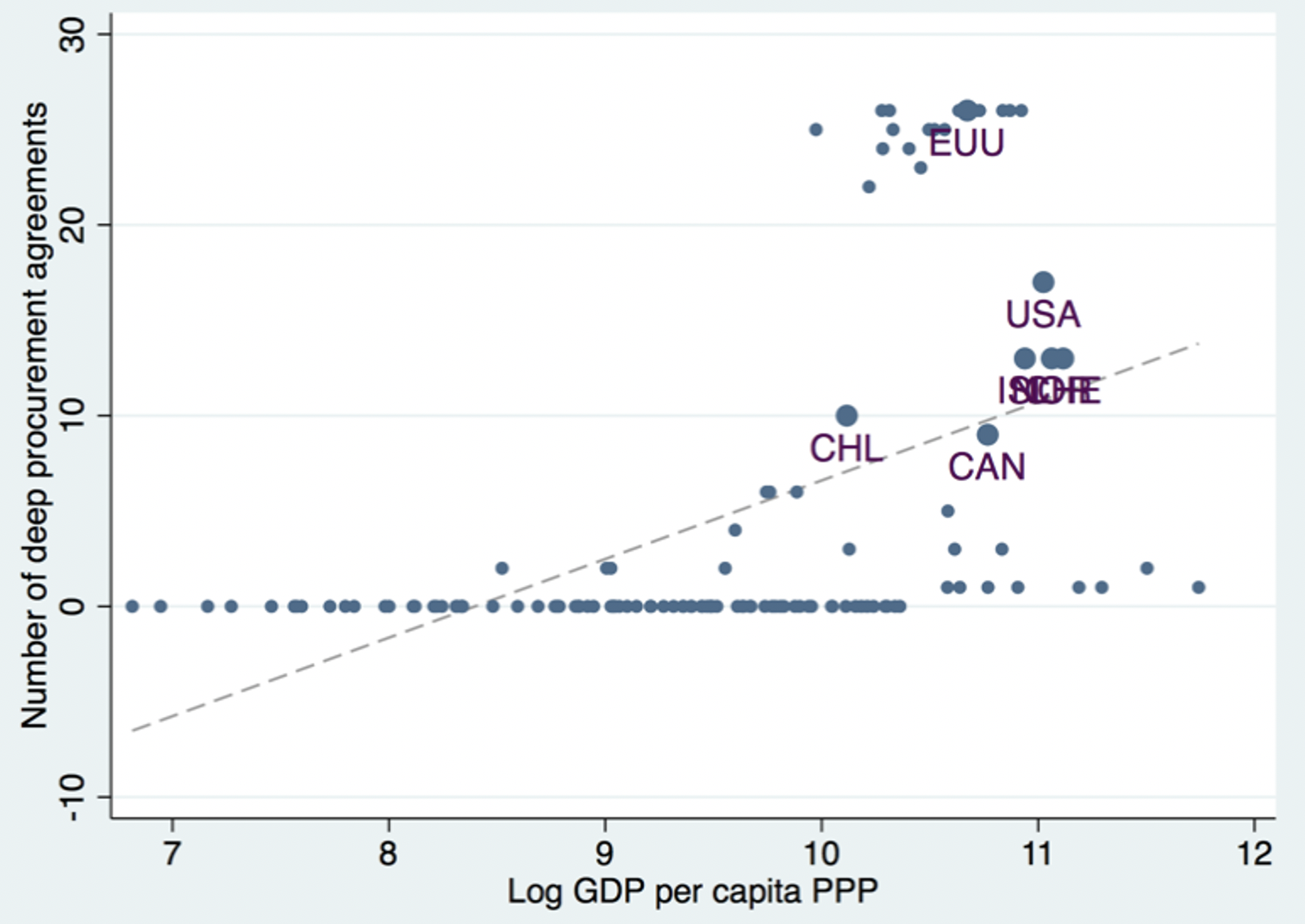In many countries, policy responses to the COVID-19 pandemic included both a major expansion in public procurement of critical medical supplies and personal protective equipment (PPE) as well as changes in trade policy instruments that aimed to increase access to such products (Baldwin and Evenett 2020). In a recent paper (Hoekman et al. 2020), we analyse the relationship between public procurement regimes and trade policy activism during the first seven months of the COVID-19 pandemic. To do so, we use trade policy data collected by the Global Trade Alert in a joint project with the European University Institute (EUI) and the World Bank, and data characterising key features of public procurement regimes and participation in trade agreements that include enforceable commitments on public procurement processes.
Our results suggest that restrictions on exports of medical products and import liberalization are positively correlated with pre-crisis attributes of public procurement regimes. The total number of steps involved in procurement and the average time taken to complete procurement processes are strongly associated with the imposition of export controls. Membership of trade agreements with public procurement disciplines – of both deep trade agreements and the plurilateral WTO Government Procurement Agreement (GPA) – is associated with actions to facilitate trade in medical products.
Motivation
The basic premise underlying the analysis is that attributes of public procurement regulation may influence incentives to use trade policy and decisions to requisition existing stocks and/or prohibit exports in crises. Prevailing procurement regimes may facilitate or constrain the ability of public agencies to acquire needed supplies of medical products. Public procurement practices that are designed to control corruption and ensure accountability through due process, transparency, non-discrimination, and competitive bidding may affect the ability to respond rapidly. Conversely, public procurement regimes that are efficient in the sense of taking less time to allocate contracts may be more conducive to addressing an emergency and attenuate incentives to resort to trade restrictions. This may be influenced by the extent of use of e-procurement systems.
Whether countries have signed deep trade agreements that require compliance with agreed good practices – transparency, non-discrimination – is another potentially relevant factor influencing public procurement regimes. Agreements that include liberalization commitments in the areas of procurement may also affect whether countries resort to trade policy. We do not have strong priors on whether the relationship between public procurement regimes and trade policy activism will be positive or negative and hence treat this as an empirical question.
Data
Information on trade policy for medical supplies and PPE spans both export and import restrictions and liberalization, and differentiates between types of instruments (tariffs, quotas, bans, licensing requirements, etc.). The project tracked changes in trade policies for medical products on a weekly basis, starting on 1 January 2020 and includes information on the date of announcement, implementation, and removal (if applicable) of measures, permitting an analysis of when trade liberalising and restrictive policy instruments were imposed and removed.1
We focus on the first half of 2020 because this is the period in which most trade policy measures were imposed. As of mid-July 2020, the dataset documented 414 trade policy measures taken by over 100 distinct jurisdictions. The measures include 209 measures liberalizing imports of protective equipment, medical supplies and medicines implemented in 106 jurisdictions, and 191 export controls imposed by 91 countries for the same set of products. The most common liberalizing measure was reductions in import tariffs, while export bans were the most common restrictive measure across countries. Data on trade policy measures are available for 133 countries.
Figure 1 Trade measures for medical products, January-July 2020 (weekly)
a) Export restrictions
b) Import liberalisation
Source: COVID-19 Trade Policy database; own calculations.
Cross-country information on attributes of pre-crisis national public procurement regimes is sourced from the World Bank and includes indicators of the number of steps involved in public procurement, the use of e-procurement, and average time taken to award contracts. Data on participation and coverage of public procurement in deep trade agreements is obtained from Shingal and Ereshchenko (2020). Public procurement processes in richer countries tend to be more efficient, involve fewer steps and take less time to complete on average (Figure 2, top panel). Richer countries also tend to be members of the GPA and to have signed more deep procurement agreements (Figure 2, bottom panel). Most developing countries have not signed the GPA or concluded trade agreements that include public procurement commitments.
Figure 2 Scatterplots of selected procurement variables against per capita income
Source: World Bank, Doing Business and WDI
Source: Shingal and Ereshchenko (2020)
Results
We assess the relationship between different attributes of public procurement regimes and trade policy measures imposed by countries on the basis of conditional correlations using the PPML estimator, controlling for the incidence of COVID-19 cases, country size, government effectiveness, and economic factors (including distance to markets, import tariffs, revealed comparative advantage for the products concerned).
The average number of pre-crisis steps required to complete procurement processes is found to be significantly positively correlated with the number of trade-liberalising measures, on both the import and export side. In contrast, this variable is positively correlated with the duration of import restrictive measures. There is also a relatively strong correlation between the total time taken for procurement and the number of trade restrictions, on both the import and export side. In contrast, the duration of import restrictions is found to be inversely related to pre-crisis average time to complete procurement processes. Thus, both attributes of pre-crisis PP regimes are strongly correlated with trade policy activism during the initial months of the pandemic, which supports our conjecture that jurisdictions with public procurement systems characterised by processes that take longer to complete made greater use of trade policy targeted at protective equipment and medical supplies.
Membership of the GPA is positively associated with the number of liberalizing measures for imports of medical products as well as removal of export restrictions. The greater the number of deep procurement agreements a jurisdiction has signed, the smaller the number of import restrictive measures imposed on medical products. These findings provide some support for a presumption that members of the GPA are more inclined (or committed) to maintaining open markets.
Amongst control variables, country size is significantly positively (significant at the 1% level) correlated with the number of export restrictions on medical products. The same result is obtained for the measure of distance to markets and greater distance from markets is associated with greater use of export restrictions. Government effectiveness is positively correlated with all categories of trade policy measures, especially export licensing requirements. Higher initial tariffs are positively correlated with liberalization of imports, which is expected as the higher the pre-crisis tariffs the greater the scope for removal of taxes to attenuate price rises for essential products. Supply-side capacity (proxied by a revealed comparative advantage in exporting medical products) is positively correlated with both import restrictive and export liberalizing measures.
Conclusion
While striking and novel, our results are no more than suggestive. Assessment of the relationship between public procurement regimes and trade policy activism during the pandemic requires data on the actual public procurement responses and their design features and efficacy. Such information is however not yet available. It also must consider the global supply response by businesses to the massive increase in demand for PPE and medical supplies, another variable for which comparable data is not yet available. Hence, the main conclusion we draw from our analysis is that future research assessing policy responses to the COVID-19 pandemic should consider the role of public procurement regimes and deep trade agreements as determinants of the use of trade policy in response to a public health crisis.
References
Baldwin, R and S Evenett (2020), COVID-19 and Trade Policy: Why Turning Inward Won’t Work, CEPR Press.
Hoekman, B, A Shingal, V Eknath and V Ereshchenko (2020), “COVID-19, public procurement regimes and trade policy”, Covid Economics 55: 81-99.
Shingal, A and V Ereshchenko (2020), “Public procurement”, in A Mattoo, N Rocha and M Ruta (eds.), Handbook of Deep Trade Agreements, World Bank.
Endnotes
1 The data can be accessed at https://www.globaltradealert.org/reports/54.











